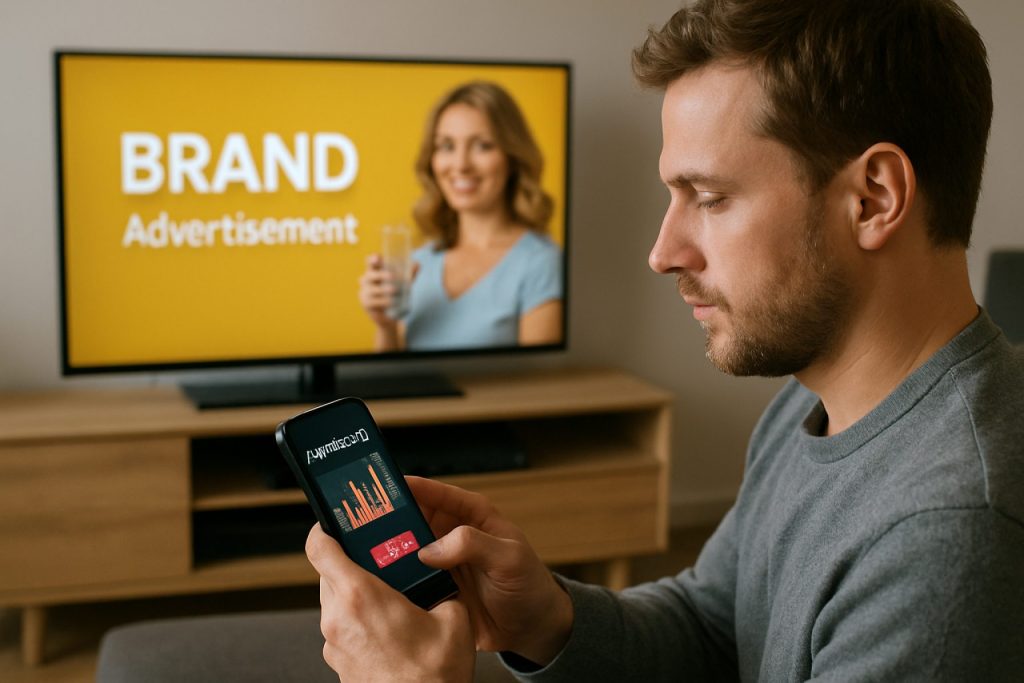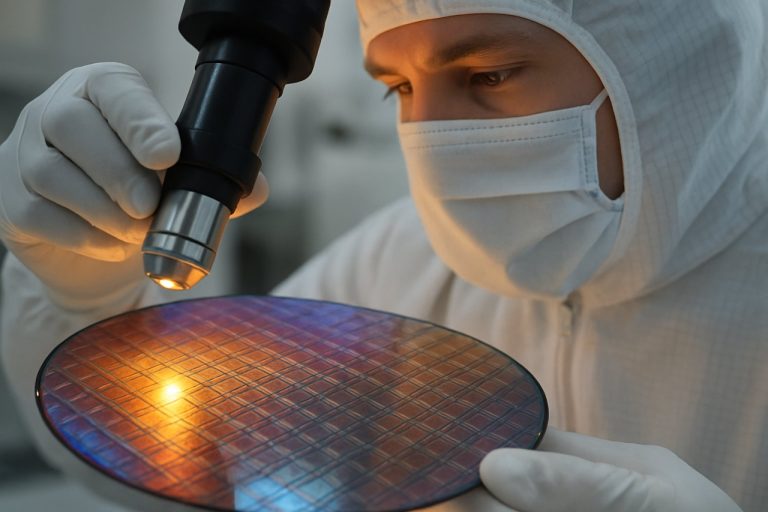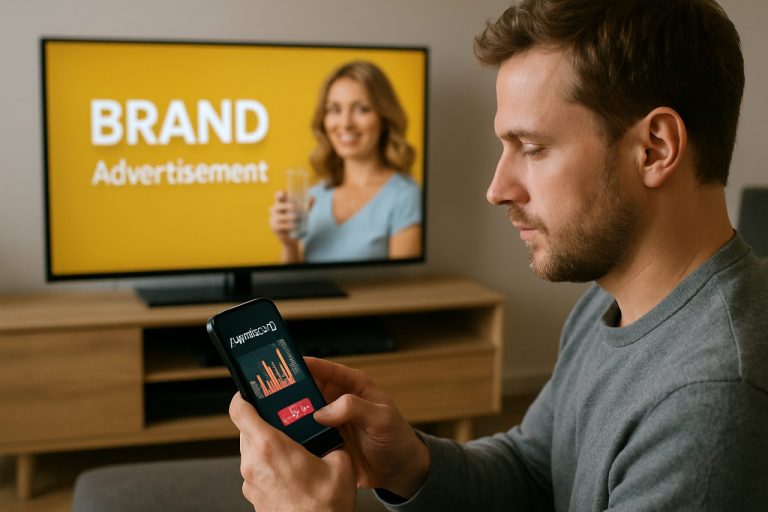
How Wywy’s TV Sync Technology Is Transforming Second-Screen Advertising: Unlocking Real-Time Audience Engagement and Redefining Cross-Platform Campaigns
- Introduction: The Rise of Second-Screen Advertising
- What Is Wywy? Company Background and Vision
- How Wywy’s TV Sync Technology Works
- Real-Time Ad Synchronization: Bridging TV and Digital
- Case Studies: Brands Leveraging Wywy for Maximum Impact
- Benefits for Advertisers and Broadcasters
- Challenges and Limitations of TV Sync Technology
- The Future of Second-Screen Engagement: Trends and Predictions
- Conclusion: Wywy’s Role in Shaping Next-Gen Advertising
- Sources & References
Introduction: The Rise of Second-Screen Advertising
The proliferation of smartphones and tablets has fundamentally transformed the way audiences engage with television content, giving rise to the phenomenon of “second-screen” usage. As viewers increasingly interact with their devices while watching TV, advertisers and broadcasters have sought innovative ways to synchronize advertising across screens for greater impact. Wywy emerged as a pioneering player in this space, leveraging TV sync technology to bridge the gap between traditional broadcast and digital engagement. By detecting live TV ads in real time and triggering corresponding digital campaigns on viewers’ mobile devices, Wywy enabled advertisers to deliver cohesive, contextually relevant messages that extended the reach and effectiveness of their TV investments.
This approach capitalized on the growing trend of multiscreen behavior, where consumers simultaneously consume content and interact with brands across platforms. Second-screen advertising, powered by technologies like Wywy’s, allowed for precise audience targeting, real-time campaign optimization, and enhanced measurement capabilities. As a result, brands could reinforce their TV messaging, drive immediate digital engagement, and gain deeper insights into consumer behavior. The rise of such synchronized advertising solutions marked a significant evolution in the advertising landscape, reflecting the need for integrated strategies in an increasingly fragmented media environment Wywy Interactive Advertising Bureau (IAB).
What Is Wywy? Company Background and Vision
Wywy was a pioneering technology company specializing in TV synchronization (TV sync) and second-screen advertising solutions. Founded in Germany in 2012, Wywy aimed to bridge the gap between traditional television viewing and digital engagement by enabling real-time synchronization between TV broadcasts and viewers’ mobile devices. The company’s core vision was to enhance the effectiveness of TV advertising by allowing brands to deliver interactive, targeted content to viewers’ smartphones and tablets precisely when their commercials aired on television.
Wywy’s technology utilized audio fingerprinting to detect live TV content, enabling advertisers to trigger synchronized digital ads or interactive experiences on second screens. This approach addressed the growing trend of “dual screening,” where viewers use mobile devices while watching TV, and provided advertisers with new opportunities to engage audiences beyond the traditional 30-second spot. By offering real-time analytics and cross-platform campaign management, Wywy empowered brands to measure the impact of their TV ads and optimize their media strategies accordingly.
The company’s vision extended beyond simple ad synchronization; Wywy sought to create a seamless, data-driven ecosystem where TV and digital advertising worked in tandem to maximize reach and engagement. Their solutions were adopted by major broadcasters, agencies, and brands across Europe and the United States, positioning Wywy as a leader in the emerging field of TV-digital convergence. In 2016, Wywy was acquired by MediaCom, further integrating its innovative technology into global media planning and buying operations.
How Wywy’s TV Sync Technology Works
Wywy’s TV sync technology operates by detecting and analyzing live TV content in real time, enabling advertisers to synchronize digital campaigns with television broadcasts. The core of Wywy’s system is its proprietary audio and video fingerprinting technology, which continuously monitors TV channels to identify when specific commercials or programs air. This detection process happens within seconds, allowing for near-instantaneous response across digital platforms.
When a TV ad is detected, Wywy’s platform triggers corresponding digital ads—such as banners, social media posts, or search ads—on viewers’ second-screen devices (smartphones, tablets, laptops) that are being used simultaneously. This synchronization ensures that the brand message is reinforced across multiple touchpoints, increasing the likelihood of consumer engagement and recall. The technology is designed to work seamlessly with a wide range of digital ad networks and demand-side platforms, making it highly adaptable for advertisers seeking cross-channel impact.
Wywy’s system also provides detailed analytics, tracking the effectiveness of synchronized campaigns by measuring metrics such as website visits, app downloads, and online conversions that occur in direct response to TV-triggered digital ads. This data-driven approach allows advertisers to optimize their media spend and better understand the interplay between TV and digital channels. For more technical details on the synchronization process and analytics capabilities, refer to Wywy.
Real-Time Ad Synchronization: Bridging TV and Digital
Real-time ad synchronization is a transformative capability in the advertising ecosystem, enabling brands to bridge the gap between traditional television and digital platforms. Wywy, a pioneer in TV sync technology, leverages automatic content recognition (ACR) to detect live TV ads as they air and instantly trigger corresponding digital campaigns on viewers’ second screens—such as smartphones, tablets, or laptops. This synchronization ensures that audiences receive a cohesive brand message across multiple channels, maximizing engagement and recall.
Wywy’s technology operates by monitoring live TV broadcasts and identifying specific ad spots in real time. When a target ad is detected, Wywy’s platform immediately activates digital ads—display, video, or social—targeted to users who are likely watching the same TV content. This approach not only amplifies the impact of TV campaigns but also allows for precise audience targeting and real-time performance measurement, which are often challenging in traditional TV advertising.
The benefits of real-time ad synchronization extend to both advertisers and consumers. Advertisers gain the ability to reinforce their TV messaging with personalized digital touchpoints, increasing the likelihood of conversion. Consumers, on the other hand, experience a more relevant and integrated advertising journey across devices. As cross-platform media consumption becomes the norm, solutions like Wywy’s TV sync technology are essential for brands seeking to maintain consistency and relevance in their advertising strategies Wywy AdExchanger.
Case Studies: Brands Leveraging Wywy for Maximum Impact
Several leading brands have successfully harnessed Wywy’s TV sync technology to amplify their advertising impact through second-screen campaigns. For instance, Nestlé utilized Wywy’s platform to synchronize its TV commercials with real-time digital ads, ensuring that viewers who saw their TV spots were immediately targeted with complementary content on their mobile devices. This approach not only reinforced brand messaging but also drove higher engagement rates and improved recall.
Similarly, Volkswagen implemented Wywy’s solution during a major vehicle launch. By syncing TV ads with interactive mobile banners, Volkswagen was able to guide viewers from passive TV consumption to active online engagement, resulting in a measurable increase in website visits and lead generation during the campaign period.
Another notable example is L’Oréal, which leveraged Wywy’s technology to bridge the gap between traditional and digital media. By delivering synchronized product information and special offers to viewers’ smartphones as their TV ads aired, L’Oréal achieved a significant uplift in both online searches and in-store traffic.
These case studies demonstrate how Wywy’s TV sync technology enables brands to create seamless, cross-platform experiences that maximize the effectiveness of their advertising spend. By capitalizing on the growing trend of second-screen usage, brands can reinforce their messaging, drive immediate action, and gain deeper insights into consumer behavior across channels.
Benefits for Advertisers and Broadcasters
Wywy’s TV sync technology and second-screen advertising offer significant benefits for both advertisers and broadcasters by bridging the gap between traditional television and digital engagement. For advertisers, Wywy enables real-time synchronization of TV commercials with targeted digital ads on viewers’ mobile devices, tablets, or computers. This synchronization increases the effectiveness of campaigns by reinforcing brand messages across multiple platforms simultaneously, leading to higher recall and engagement rates. Advertisers can also leverage Wywy’s analytics to gain granular insights into audience behavior, such as which TV spots drive the most digital interaction, allowing for more precise campaign optimization and improved return on investment (Wywy).
For broadcasters, Wywy’s technology provides a new revenue stream by enabling the sale of synchronized digital ad inventory alongside traditional TV spots. This dual-channel approach helps broadcasters demonstrate the extended reach and impact of their programming to advertisers, making TV ad slots more attractive in a competitive media landscape. Additionally, broadcasters benefit from enhanced audience measurement capabilities, as Wywy’s platform tracks cross-device engagement and provides real-time data on viewer responses. This data can be used to refine programming and advertising strategies, ensuring content remains relevant and compelling (Wywy).
Overall, Wywy’s TV sync and second-screen solutions foster a more interactive and measurable advertising ecosystem, driving value for both advertisers seeking greater impact and broadcasters aiming to maximize their inventory and audience insights.
Challenges and Limitations of TV Sync Technology
Despite the innovative potential of TV sync technology and second-screen advertising platforms like Wywy, several challenges and limitations hinder their widespread adoption and effectiveness. One significant challenge is the accurate and real-time synchronization of TV content with second-screen devices. Variations in broadcast delays, streaming lags, and regional differences can disrupt the seamless delivery of synchronized content, leading to a fragmented user experience. Additionally, the diversity of devices and operating systems complicates the development of universally compatible applications, increasing technical complexity and maintenance costs.
Privacy concerns also pose a substantial limitation. TV sync technologies often require access to users’ microphones or viewing data to identify broadcast content, raising issues around data security and user consent. Regulatory frameworks such as the General Data Protection Regulation (GDPR) in Europe further complicate data collection and processing, necessitating robust compliance measures from providers like Wywy.
Another challenge is user engagement. While second-screen experiences can enhance interactivity, not all viewers are inclined to use a secondary device while watching TV. This limits the reach and impact of synchronized advertising campaigns. Moreover, advertisers face difficulties in measuring the true effectiveness of these campaigns due to fragmented analytics across platforms and devices.
Finally, the rapid evolution of media consumption habits, with a shift toward on-demand and streaming services, reduces the relevance of traditional broadcast synchronization. As audiences migrate away from linear TV, the core value proposition of TV sync technology must adapt to remain viable in a changing media landscape (Interactive Advertising Bureau).
The Future of Second-Screen Engagement: Trends and Predictions
The future of second-screen engagement, particularly through technologies like Wywy’s TV sync solutions, is poised for significant evolution as consumer media habits continue to shift. With the proliferation of smartphones and tablets, viewers increasingly interact with content on multiple devices simultaneously, creating new opportunities for synchronized advertising and enhanced viewer engagement. Wywy’s technology, which enables real-time synchronization between TV broadcasts and second-screen devices, is at the forefront of this transformation, allowing advertisers to deliver contextually relevant ads and interactive experiences precisely when viewers are most receptive.
Emerging trends suggest that second-screen engagement will become more personalized and data-driven. As artificial intelligence and machine learning advance, platforms like Wywy are expected to leverage deeper audience insights to tailor content and advertisements to individual preferences and behaviors. This hyper-targeted approach not only increases ad effectiveness but also enhances the overall user experience by making interactions more relevant and less intrusive.
Additionally, the integration of shoppable content and interactive features is likely to grow, enabling viewers to make purchases or access additional information directly from their second-screen devices while watching TV. This seamless convergence of entertainment and commerce is already being explored by major broadcasters and brands, signaling a future where second-screen advertising becomes an integral part of the media ecosystem. As privacy regulations evolve, companies like Wywy will also need to prioritize transparent data practices to maintain consumer trust and compliance with global standards (Wywy; Interactive Advertising Bureau).
Conclusion: Wywy’s Role in Shaping Next-Gen Advertising
Wywy’s pioneering work in TV sync technology and second-screen advertising has significantly influenced the evolution of cross-platform marketing strategies. By enabling real-time synchronization between television broadcasts and digital devices, Wywy has empowered advertisers to deliver highly targeted, contextually relevant content to viewers at the precise moment of engagement. This innovation not only bridges the gap between traditional TV and digital advertising but also enhances the overall effectiveness of campaigns by leveraging data-driven insights and user behavior patterns. As a result, brands can achieve higher engagement rates, improved brand recall, and more measurable ROI compared to conventional TV advertising alone.
Moreover, Wywy’s solutions have set new standards for audience measurement and attribution, allowing marketers to track the direct impact of TV ads on digital actions such as website visits, app downloads, and online purchases. This holistic approach to campaign analytics has encouraged a shift towards more integrated, omnichannel advertising strategies across the industry. As consumer media consumption continues to fragment across multiple screens, Wywy’s technology remains at the forefront of enabling seamless, synchronized brand experiences that resonate with today’s connected audiences. In summary, Wywy’s contributions have not only advanced the technical capabilities of second-screen advertising but have also played a pivotal role in shaping the future of next-generation, data-driven advertising ecosystems Wywy.



